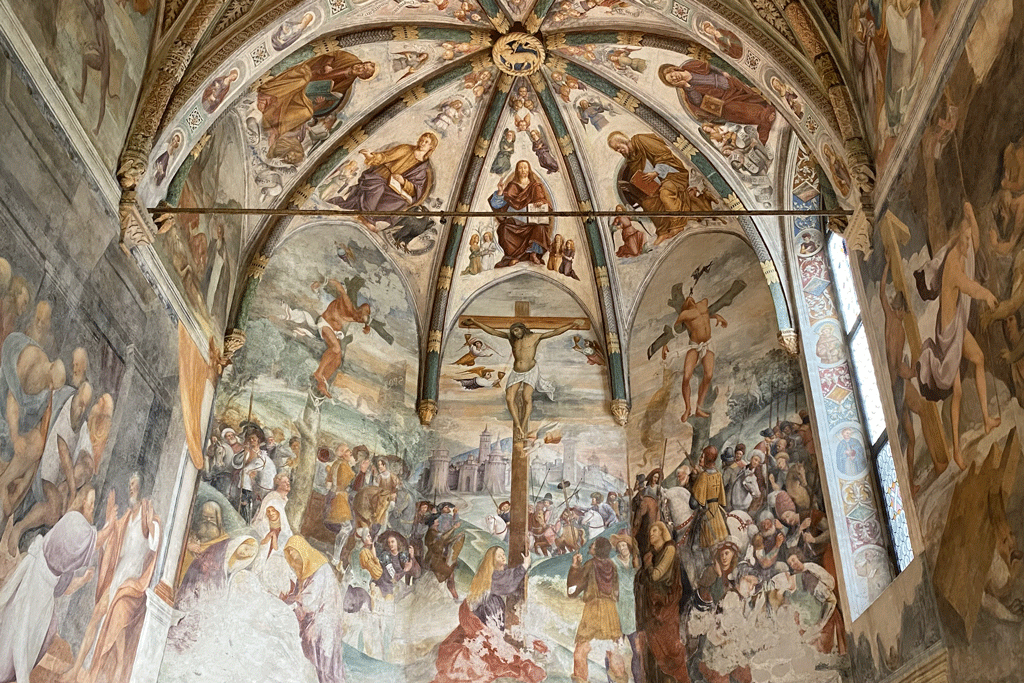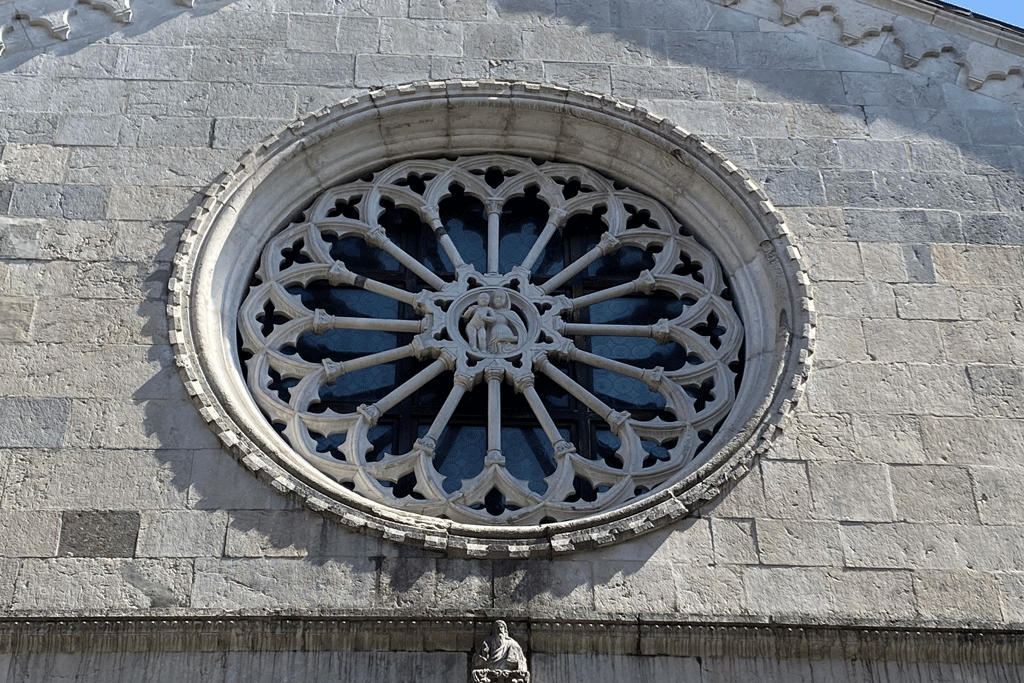



The church was consecrated in 1308, perhaps following the restoration and expansion of an older Christian sacellum and is dedicated to Sant’Antonio Abate.
In 1348 work was necessary to repair the considerable damage caused by an earthquake. Other interventions were carried out in 1405, while in 1441 it was decided to extend the church, perhaps to raise the roof, build the choir and a small sacristy.
At that time the nave was equipped with only one altar, probably located in front of the arch of the choir, dedicated to Sant’Antonio Abate.
In 1469 the decorations of the arches of the attic were made, illustrated with sacred and profane allegorical figures, while in 1470 the works on the Gothic façade in Istrian stone were completed with the magnificent radial rose window which houses the Madonna and Child in the clypeus and the portal which in the lunette welcomes the figures of the Eternal Father, John the Baptist, Anthony of Padua and Anthony the Abbot.
The church has a single nave and is covered by three cycles of frescoes: the first two were painted by Vitale da Bologna towards the end of the fourteenth century, while the third was frescoed by Martino da Udine, known as “Pellegrino da San Daniele”.